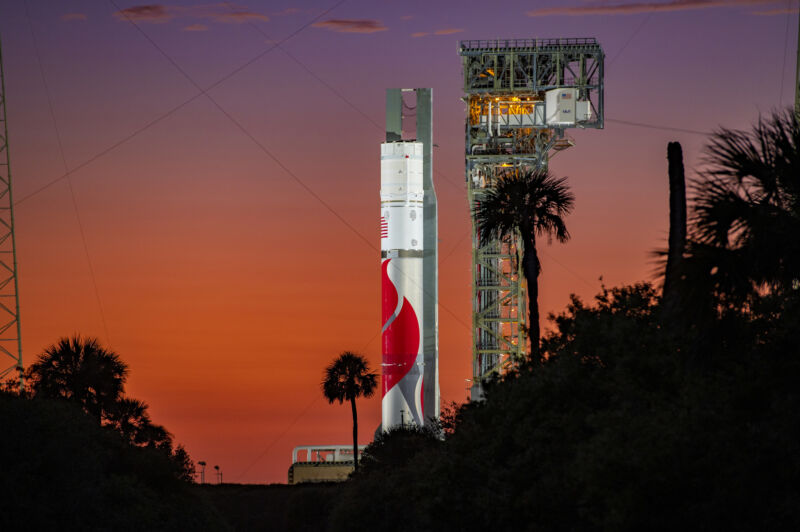
The long-awaited debut of a winged space plane will have to wait a little longer. This week NASA updated its internal schedule to show that Sierra Space's Dream Chaser spacecraft will now berth to the International Space Station no earlier than December 17, 2023.
Previously, Sierra Space had been publicly targeting a launch of Dream Chaser in August, on board United Launch Alliance's new Vulcan rocket.
In a statement to Ars, Sierra Space confirmed the delay. "Sierra Space’s plan is to complete the first launch of Dream Chaser by the end of the fourth quarter this year," the company said.
The latest delay will cause mild concern for NASA, as it means that beginning this summer the US segment of the space station will be reliant on the Falcon 9 rocket alone for cargo supply missions. This is because in addition to ferrying SpaceX's Cargo Dragon to the station, Northrop Grumman's cargo-carrying Cygnus will start launching on the Falcon 9 later this year.
Northrop needed to find an alternative rocket for Cygnus after the Russian-made engines for its Antares 230+ no longer were available in the wake of the Ukraine war. The Falcon 9 was the only US rocket available, and it will take a couple of years to develop a replacement launch vehicle. So until Dream Chaser starts flying on Vulcan, if NASA's astronauts want to dine, they'll need to be DoorDashing on the Falcon 9.
Vulcan needs payloads
The bigger issue Dream Chaser's latest—and quite possibly not final—delay raises is its downstream impacts on the launch manifest of the much-anticipated Vulcan rocket.
Here's what we know for sure. United Launch Alliance is intent on flying two "certification" missions of the large rocket so it can complete paperwork for the US Space Force and begin launching lucrative missions for the military. The company was supposed to start doing so last year and has started to come under significant pressure from Space Force officials to deliver. The US military is United Launch Alliance's most important customer.
The nominal plan for these certification launches entails flying Astrobotic's lunar lander on the "Cert. 1" mission in May, and Dream Chaser on "Cert. 2" in August. During a teleconference with reporters about one month ago, United Launch Alliance CEO Tory Bruno insisted that this schedule would allow Vulcan to become certified and fly its first national security mission "at the end of the year, out in quarter four."
Yet on this nominal plan, if Astrobotic flies in May, and Dream Chaser is not scheduled to fly in December, there would be no chance to fly a national security mission in 2023. After the second certification mission, there will need to be, at a minimum, a few months of time for the government to analyze data and declare Vulcan fit for high-value, high-performance missions.
Jessica Rye, a spokesperson for United Launch Alliance, said the company remains committed to flying a national security mission in 2023.
"In our history and as part of our culture, we have always been focused first and foremost on our customer’s mission and have worked with all customers if there are delays due to payload readiness," she said. "We will remain flexible as long as we can for Sierra Space to be ready to fly. If our customer encounters difficulty meeting our plan, we have provisions for a mass simulator as an alternative and are committed to ensuring that we complete US Space Force certification of Vulcan in advance of our first national security space mission in fourth quarter 2023."
So what will actually happen?
A reasonable guess is that the "Cert. 1" mission now scheduled for May 4, which is just six weeks from now, will be delayed. A source said that Astrobotic has completed engine testing on its Peregrine lunar lander and that the vehicle is nearly ready to go. Therefore, the pacing item for Vulcan's debut launch now appears to be the rocket itself, not its payload.
United Launch Alliance has been conducting propellant loading tests on the rocket in recent weeks in advance of a wet dress rehearsal and a static fire test. On Twitter Thursday, Bruno said the first stage has performed well during these tests but suggested there may have been some slight issues with the Centaur upper stage and ground systems. "There was some learning specific to the ground system. We are tuning up some procedures and software to have that all in place for the (wet dress rehearsal)."
Given the work remaining to complete preparations for the Cert. 1 mission, it is probable that the debut launch slips into this summer, perhaps July or August. We can expect United Launch Alliance to set a launch date with confidence after the static fire test, which it is calling a "flight readiness firing."
Rye said the Cert. 2 mission will fly "just a few months" after the first Vulcan mission. This probably means the fourth quarter of 2023. If Dream Chaser is well and truly ready, it will still probably fly on this second flight in December. If development of the space plane slips further, then United Launch Alliance may launch a mass simulator.
What seems highly improbable is that Vulcan will complete two certification flights this summer and fall and can also launch a national security mission before the end of the year.
reader comments
113